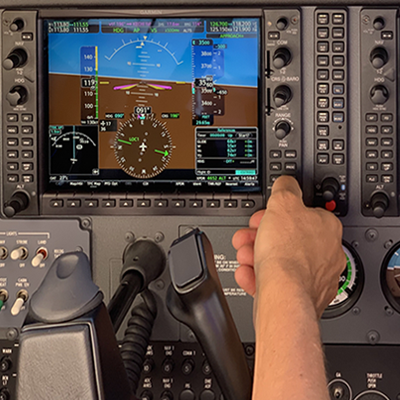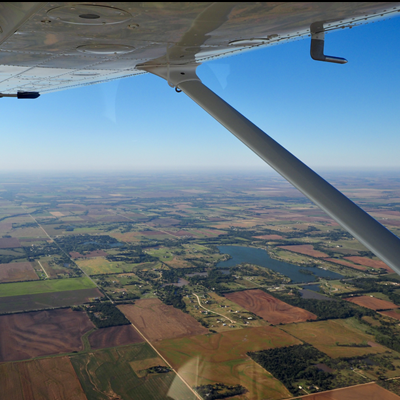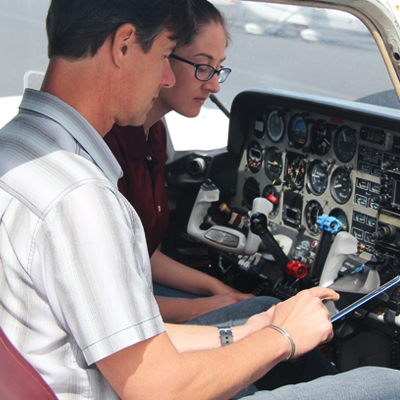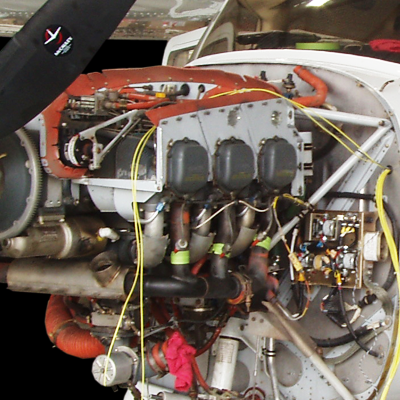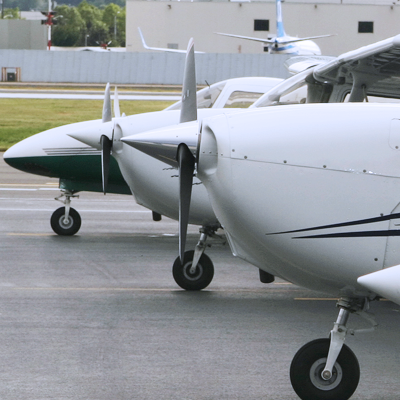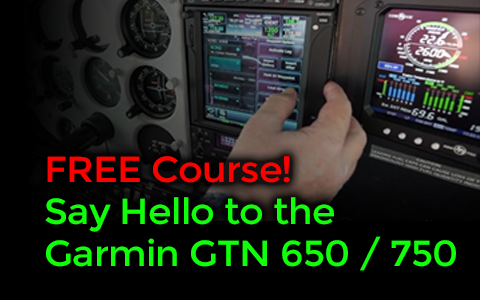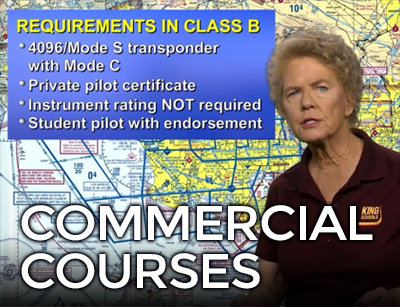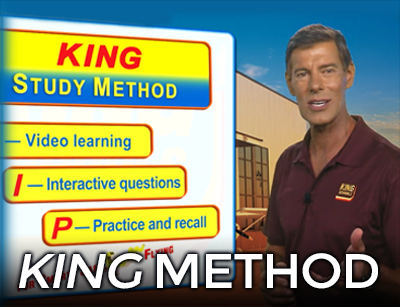ACS Missed Question Codes - Commercial Pilot
FAA Missed ACS Codes
for Commercial Pilot Exams
Commercial Pilot ACS Exams
Got some missed questions on your Commercial written test? No worries, it happens to all of us. If the codes listed on your test results start with "CA", you're in the right place. Your Commercial Pilot ACS (Once known as PLT) missed question codes will be listed below, and you can see which subject areas to study more before your checkride. Keep in mind, you won't know exactly which questions you got wrong, only the general subjects missed of the Commercial ACS.
- If you missed any questions on your FAA Knowledge Test, you will find the Airman Certification Standards codes on your test report.
- Your flight instructor will review the material of the missed Airman Certification Standards codes prior to taking your practical test.
Click Here to view, and if desired, download, your ACS document.
ACS Code
Knowledge Area
CA.I.A.K1
Certification requirements, recent flight experience, and recordkeeping.
CA.I.A.K2
Privileges and limitations.
CA.I.A.K3
Medical certificates: class, expiration, privileges, temporary disqualifications.
CA.I.A.K4
Documents required to exercise commercial pilot privileges.
CA.I.A.K5
Part 68 BasicMed privileges and limitations.
CA.I.B.K1
General airworthiness requirements and compliance for airplanes, including:
CA.I.B.K1a
a. Certificate location and expiration dates
CA.I.B.K1b
b. Required inspections and airplane logbook documentation
CA.I.B.K1c
c. Airworthiness Directives and Special Airworthiness Information Bulletins
CA.I.B.K1d
d. Purpose and procedure for obtaining a special flight permit
CA.I.B.K2
Pilot-performed preventive maintenance.
CA.I.B.K3
Equipment requirements for day and night VFR flight, to include:
CA.I.B.K3a
a. Flying with inoperative equipment
CA.I.B.K3b
b. Using an approved Minimum Equipment List (MEL)
CA.I.B.K3c
c. Kinds of Operation Equipment List (KOEL)
CA.I.B.K3d
d. Required discrepancy records or placards
CA.I.C.K1
Sources of weather data (e.g., National Weather Service, Flight Service) for flight planning purposes.
CA.I.C.K2
Acceptable weather products and resources required for preflight planning, current and forecast weather for departure, en route, and arrival phases of flight.
CA.I.C.K3
Meteorology applicable to the departure, en route, alternate, and destination under VFR in Visual Meteorological Conditions (VMC) to include expected climate and hazardous conditions such as:
CA.I.C.K3a
a. Atmospheric composition and stability
CA.I.C.K3b
b. Wind (e.g., crosswind, tailwind, windshear, mountain wave, etc.)
CA.I.C.K3c
c. Temperature
CA.I.C.K3d
d. Moisture/precipitation
CA.I.C.K3e
e. Weather system formation, including air masses and fronts
CA.I.C.K3f
f. Clouds
CA.I.C.K3g
g. Turbulence
CA.I.C.K3h
h. Thunderstorms and microbursts
CA.I.C.K3i
i. Icing and freezing level information
CA.I.C.K3j
j. Fog/mist
CA.I.C.K3k
k. Frost
CA.I.C.K3l
l. Obstructions to visibility (e.g., smoke, haze, volcanic ash, etc.)
CA.I.C.K4
Flight deck displays of digital weather and aeronautical information.
CA.I.D.K1
Route planning, including consideration of different classes and special use airspace (SUA) and selection of appropriate and available navigation/communication systems and facilities.
CA.I.D.K2
Altitude selection accounting for terrain and obstacles, glide distance of the airplane, VFR cruising altitudes, and the effect of wind.
CA.I.D.K3
Calculating:
CA.I.D.K3a
a. Time, climb and descent rates, course, distance, heading, true airspeed, and groundspeed
CA.I.D.K3b
b. Estimated time of arrival to include conversion to universal coordinated time (UTC)
CA.I.D.K3c
c. Fuel requirements, to include reserve
CA.I.D.K4
Elements of a VFR flight plan.
CA.I.D.K5
Procedures for activating and closing a VFR flight plan.
CA.I.E.K1
Types of airspace/airspace classes and associated requirements and limitations.
CA.I.E.K2
Charting symbology.
CA.I.E.K3
Special use airspace (SUA), special flight rules areas (SFRA), temporary flight restrictions (TFR), and other airspace areas.
CA.I.F.K1
Elements related to performance and limitations by explaining the use of charts, tables, and data to determine performance.
CA.I.F.K2
Factors affecting performance, to include:
CA.I.F.K2a
a. Atmospheric conditions
CA.I.F.K2b
b. Pilot technique
CA.I.F.K2c
c. Airplane configuration
CA.I.F.K2d
d. Airport environment
CA.I.F.K2e
e. Loading (e.g., center of gravity)
CA.I.F.K2f
f. Weight and balance
CA.I.F.K3
Aerodynamics.
CA.I.G.K1
Airplane systems, to include: Note: If K1 is selected, the evaluator must assess the applicant’s knowledge of at least three of the following sub-elements.
CA.I.G.K1a
a. Primary flight controls
CA.I.G.K1b
b. Secondary flight controls
CA.I.G.K1c
c. Powerplant and propeller
CA.I.G.K1d
d. Landing gear
CA.I.G.K1e
e. Fuel, oil, and hydraulic
CA.I.G.K1f
f. Electrical
CA.I.G.K1g
g. Avionics
CA.I.G.K1h
h. Pitot-static, vacuum/pressure, and associated flight instruments
CA.I.G.K1i
i. Environmental
CA.I.G.K1j
j. Deicing and anti-icing
CA.I.G.K1k
k. Water rudders (ASES, AMES)
CA.I.G.K1l
l. Oxygen system
CA.I.G.K2
Indications of and procedures for managing system abnormalities or failures.
CA.I.H.K1
The symptoms (as applicable), recognition, causes, effects, and corrective actions associated with aeromedical and physiological issues including:
CA.I.H.K1a
a. Hypoxia
CA.I.H.K1b
b. Hyperventilation
CA.I.H.K1c
c. Middle ear and sinus problems
CA.I.H.K1d
d. Spatial disorientation
CA.I.H.K1e
e. Motion sickness
CA.I.H.K1f
f. Carbon monoxide poisoning
CA.I.H.K1g
g. Stress
CA.I.H.K1h
h. Fatigue
CA.I.H.K1i
i. Dehydration and nutrition
CA.I.H.K1j
j. Hypothermia
CA.I.H.K1k
k. Optical illusions
CA.I.H.K1l
l. Dissolved nitrogen in the bloodstream after scuba dives
CA.I.H.K2
Regulations regarding use of alcohol and drugs.
CA.I.H.K3
Effects of alcohol, drugs, and over-the-counter medications.
CA.I.H.K4
Aeronautical Decision-Making (ADM).
CA.I.I.K1
The characteristics of a water surface as affected by features, such as:
CA.I.I.K1a
a. Size and location
CA.I.I.K1b
b. Protected and unprotected areas
CA.I.I.K1c
c. Surface wind
CA.I.I.K1d
d. Direction and strength of water current
CA.I.I.K1e
e. Floating and partially submerged debris
CA.I.I.K1f
f. Sandbars, islands, and shoals
CA.I.I.K1g
g. Vessel traffic and wakes
CA.I.I.K1h
h. Other characteristics specific to the area
CA.I.I.K2
Float and hull construction, and its effect on seaplane performance.
CA.I.I.K3
Causes of porpoising and skipping, and the pilot action needed to prevent or correct these occurrences.
CA.I.I.K4
How to locate and identify seaplane bases on charts or in directories.
CA.I.I.K5
Operating restrictions at various bases.
CA.I.I.K6
Right-of-way, steering, and sailing rules pertinent to seaplane operation.
CA.I.I.K7
Marine navigation aids, such as buoys, beacons, lights, sound signals, and range markers.
CA.II.A.K1
Pilot self-assessment.
CA.II.A.K2
Determining that the airplane to be used is appropriate and airworthy.
CA.II.A.K3
Airplane preflight inspection including:
CA.II.A.K3a
a. Which items must be inspected
CA.II.A.K3b
b. The reasons for checking each item
CA.II.A.K3c
c. How to detect possible defects
CA.II.A.K3d
d. The associated regulations
CA.II.A.K4
Environmental factors including weather, terrain, route selection, and obstructions.
CA.II.B.K1
Passenger briefing requirements, to include operation and required use of safety restraint systems.
CA.II.B.K2
Use of appropriate checklists.
CA.II.B.K3
Requirements for current and appropriate navigation data.
CA.II.C.K1
Starting under various conditions.
CA.II.C.K2
Starting the engine(s) by use of external power.
CA.II.C.K3
Engine limitations as they relate to starting.
CA.II.D.K1
Current airport aeronautical references and information resources such as the Chart Supplement, airport diagram, and NOTAMS.
CA.II.D.K2
Taxi instructions/clearances.
CA.II.D.K3
Airport markings, signs, and lights.
CA.II.D.K4
Visual indicators for wind.
CA.II.D.K5
Aircraft lighting.
CA.II.D.K6
Procedures for:
CA.II.D.K6a
a. Appropriate flight deck activities prior to taxi, including route planning and identifying the location of Hot Spots
CA.II.D.K6b
b. Radio communications at towered and nontowered airports.
CA.II.D.K6c
c. Entering or crossing runways
CA.II.D.K6d
d. Night taxi operations
CA.II.D.K6e
e. Low visibility taxi operations
CA.II.E.K1
Airport information resources including Chart Supplements, airport diagram, and appropriate references.
CA.II.E.K2
Taxi instructions/clearances.
CA.II.E.K3
Airport/seaplane base markings, signs, and lights.
CA.II.E.K4
Visual indicators for wind.
CA.II.E.K5
Airplane lighting.
CA.II.E.K6
Procedures for:
CA.II.E.K6a
a. Appropriate flight deck activities during taxiing or sailing
CA.II.E.K6b
b. Radio communications at towered and nontowered seaplane bases
CA.II.F.K1
Purpose of pre-takeoff checklist items including:
CA.II.F.K1a
a. Reasons for checking each item
CA.II.F.K1b
b. Detecting malfunctions
CA.II.F.K1c
c. Ensuring the airplane is in safe operating condition as recommended by the manufacturer
CA.III.A.K1
How to obtain proper radio frequencies.
CA.III.A.K2
Proper radio communication procedures and ATC phraseology.
CA.III.A.K3
ATC light signal recognition.
CA.III.A.K4
Appropriate use of transponders.
CA.III.A.K5
Lost communication procedures.
CA.III.A.K6
Equipment issues that could cause loss of communication.
CA.III.A.K7
Radar assistance.
CA.III.A.K8
National Transportation Safety Board (NTSB) accident/incident reporting.
CA.III.A.K9
Runway Status Lighting Systems.
CA.III.B.K1
Towered and nontowered airport operations.
CA.III.B.K2
Runway selection for the current conditions.
CA.III.B.K3
Right-of-way rules.
CA.III.B.K4
Use of automated weather and airport information.
CA.IV.A.K1
Effects of atmospheric conditions, including wind, on takeoff and climb performance.
CA.IV.A.K2
VX and VY
CA.IV.A.K3
Appropriate airplane configuration.
CA.IV.B.K1
A stabilized approach, to include energy management concepts.
CA.IV.B.K2
Effects of atmospheric conditions, including wind, on approach and landing performance.
CA.IV.B.K3
Wind correction techniques on approach and landing.
CA.IV.C.K1
Effects of atmospheric conditions, including wind, on takeoff and climb performance.
CA.IV.C.K2
VX and VY
CA.IV.C.K3
Appropriate airplane configuration.
CA.IV.C.K4
Ground effect.
CA.IV.C.K5
Importance of weight transfer from wheels to wings.
CA.IV.C.K6
Left turning tendencies.
CA.IV.D.K1
A stabilized approach, to include energy management concepts.
CA.IV.D.K2
Effects of atmospheric conditions, including wind, on approach and landing performance.
CA.IV.D.K3
Wind correction techniques on approach and landing.
CA.IV.E.K1
Effects of atmospheric conditions, including wind, on takeoff and climb performance.
CA.IV.E.K2
VX and VY
CA.IV.E.K3
Appropriate airplane configuration.
CA.IV.F.K1
A stabilized approach, to include energy management concepts.
CA.IV.F.K2
Effects of atmospheric conditions, including wind, on approach and landing performance.
CA.IV.F.K3
Wind correction techniques on approach and landing.
CA.IV.G.K1
Effects of atmospheric conditions, including wind, on takeoff and climb performance.
CA.IV.G.K2
VX and VY
CA.IV.G.K3
Appropriate airplane configuration.
CA.IV.G.K4
Effects of water surface.
CA.IV.H.K1
A stabilized approach, to include energy management concepts.
CA.IV.H.K2
Effects of atmospheric conditions, including wind, on approach and landing performance.
CA.IV.H.K3
Wind correction techniques on approach and landing.
CA.IV.I.K1
Effects of atmospheric conditions on takeoff and climb performance.
CA.IV.I.K2
VX and VY
CA.IV.I.K3
Appropriate airplane configuration.
CA.IV.I.K4
Appropriate use of glassy water takeoff and climb technique.
CA.IV.J.K1
A stabilized approach, to include energy management concepts.
CA.IV.J.K2
Effects of atmospheric conditions on approach and landing performance.
CA.IV.J.K3
When and why glassy water techniques are used.
CA.IV.J.K4
How a glassy water approach and landing is executed.
CA.IV.K.K1
Effects of atmospheric conditions, including wind, on takeoff and climb performance.
CA.IV.K.K2
VX and VY
CA.IV.K.K3
Appropriate airplane configuration.
CA.IV.K.K4
Appropriate use of rough water takeoff and climb technique.
CA.IV.L.K1
A stabilized approach, to include energy management concepts.
CA.IV.L.K2
Effects of atmospheric conditions, including wind, on approach and landing performance.
CA.IV.L.K3
Wind correction techniques on approach and landing.
CA.IV.L.K4
When and why rough water techniques are used.
CA.IV.L.K5
How a rough water approach and landing is executed.
CA.IV.M.K1
A stabilized approach, to include energy management concepts.
CA.IV.M.K2
Effects of atmospheric conditions, including wind, on approach and landing.
CA.IV.M.K3
Wind correction techniques on approach and landing.
CA.IV.M.K4
Purpose of power-off accuracy approach.
CA.IV.N.K1
A stabilized approach, to include energy management concepts.
CA.IV.N.K2
Effects of atmospheric conditions, including wind and density altitude on a go-around or rejected landing.
CA.IV.N.K3
Wind correction techniques on takeoff/departure and approach/landing.
CA.V.A.K1
Purpose of steep turns.
CA.V.A.K2
Aerodynamics associated with steep turns, to include:
CA.V.A.K2a
a. Coordinated and uncoordinated flight
CA.V.A.K2b
b. Overbanking tendencies
CA.V.A.K2c
c. Maneuvering speed, including the impact of weight changes
CA.V.A.K2d
d. Load factor and accelerated stalls
CA.V.A.K2e
e. Rate and radius of turn
CA.V.B.K1
Purpose of steep spirals.
CA.V.B.K2
Maintaining a constant radius about a point.
CA.V.B.K3
Effects of wind on ground track and relation to a ground reference point.
CA.V.C.K1
Purpose of chandelles.
CA.V.C.K2
Aerodynamics associated with chandelles, to include:
CA.V.C.K2a
a. Coordinated and uncoordinated flight
CA.V.C.K2b
b. Overbanking tendencies
CA.V.C.K2c
c. Maneuvering speed, including the impact of weight changes
CA.V.C.K2d
d. Accelerated stalls
CA.V.C.K3
Appropriate airplane configuration for maximum performance climb.
CA.V.C.K4
Proper pitch control required for continuously decreasing airspeed.
CA.V.D.K1
Purpose of lazy eights.
CA.V.D.K2
Aerodynamics associated with lazy eights, to include coordinated and uncoordinated flight.
CA.V.D.K3
Performance and airspeed limitations.
CA.V.D.K4
Phases of the lazy eight maneuver from entry to recovery.
CA.V.E.K1
Purpose of eights on pylons.
CA.V.E.K2
Aerodynamics associated with the eights on pylons to include coordinated and uncoordinated flight.
CA.V.E.K3
Pivotal altitude and factors that affect it.
CA.V.E.K4
Effect of wind on ground track.
CA.V.E.K5
Phases of the eights on pylons maneuver from entry to recovery.
CA.VI.A.K1
Pilotage and dead reckoning.
CA.VI.A.K2
Magnetic compass errors.
CA.VI.A.K3
Topography.
CA.VI.A.K4
Selection of appropriate:
CA.VI.A.K4a
a. Route
CA.VI.A.K4b
b. Altitude(s)
CA.VI.A.K4c
c. Checkpoints
CA.VI.A.K5
Plotting a course, to include:
CA.VI.A.K5a
a. Determining heading, speed, and course
CA.VI.A.K5b
b. Wind correction angle
CA.VI.A.K5c
c. Estimating time, speed, and distance
CA.VI.A.K5d
d. True airspeed and density altitude
CA.VI.A.K6
Power setting selection.
CA.VI.A.K7
Planned versus actual flight plan calculations and required corrections.
CA.VI.B.K1
Ground-based navigation (orientation, course determination, equipment, tests, and regulations).
CA.VI.B.K2
Satellite-based navigation (e.g., equipment, regulations, database considerations, and limitations of satellite navigation).
CA.VI.B.K3
Radar assistance to VFR aircraft (e.g., operations, equipment, available services, traffic advisories).
CA.VI.B.K4
Transponder (Mode(s) A, C, and S) and ADS-B.
CA.VI.C.K1
Selecting an alternate destination.
CA.VI.C.K2
Situations that require deviations from flight plan or ATC instructions.
CA.VI.D.K1
Methods to determine position.
CA.VI.D.K2
Assistance available if lost (e.g., radar services, communication procedures).
CA.VII.A.K1
Aerodynamics associated with slow flight in various airplane configurations, to include the relationship between angle of attack, airspeed, load factor, power setting, airplane weight and center of gravity, airplane attitude, and yaw effects.
CA.VII.B.K1
Aerodynamics associated with stalls in various airplane configurations, to include the relationship between angle of attack, airspeed, load factor, power setting, airplane weight and center of gravity, airplane attitude, and yaw effects.
CA.VII.B.K2
Stall characteristics (i.e., airplane design) and impending stall and full stall indications (i.e., how to recognize by sight, sound, or feel).
CA.VII.B.K3
Factors and situations that can lead to a power-off stall and actions that can be taken to prevent it.
CA.VII.B.K4
Fundamentals of stall recovery.
CA.VII.C.K1
Aerodynamics associated with stalls in various airplane configurations, to include the relationship between angle of attack, airspeed, load factor, power setting, airplane weight and center of gravity, airplane attitude, and yaw effects.
CA.VII.C.K2
Stall characteristics (i.e., airplane design) and impending stall and full stall indications (i.e., how to recognize by sight, sound, or feel).
CA.VII.C.K3
Factors and situations that can lead to a power-on stall and actions that can be taken to prevent it.
CA.VII.C.K4
Fundamentals of stall recovery.
CA.VII.D.K1
Aerodynamics associated with accelerated stalls in various airplane configurations, to include the relationship between angle of attack, airspeed, load factor, power setting, airplane weight and center of gravity, airplane attitude, and yaw effects.
CA.VII.D.K2
Stall characteristics (i.e., airplane design), impending stall, and full stall indications (i.e., how to recognize by sight, sound, or feel).
CA.VII.D.K3
Factors and situations that can lead to an accelerated stall and actions that can be taken to prevent it.
CA.VII.D.K4
Fundamentals of stall recovery.
CA.VII.E.K1
Aerodynamics associated with spins in various airplane configurations, to include the relationship between angle of attack, airspeed, load factor, power setting, airplane weight and center of gravity, airplane attitude, and yaw effects.
CA.VII.E.K2
What causes a spin and how to identify the entry, incipient, and developed phases of a spin.
CA.VII.E.K3
Spin recovery procedure.
CA.VIII.A.K1
Regulatory requirements for supplemental oxygen use by flight crew and passengers.
CA.VIII.A.K2
Physiological factors, to include:
CA.VIII.A.K2a
a. Impairment
CA.VIII.A.K2b
b. Symptoms of hypoxia
CA.VIII.A.K2c
c. Time of useful consciousness (TUC)
CA.VIII.A.K3
Operational factors, to include:
CA.VIII.A.K3a
a. Characteristics, limitations, and applicability of continuous flow, demand, and pressure-demand oxygen systems
CA.VIII.A.K3b
b. Differences between and identification of “aviator’s breathing oxygen” and other types of oxygen
CA.VIII.A.K3c
c. Necessary precautions when using supplemental oxygen systems
CA.VIII.B.K1
Fundamental concepts of airplane pressurization system, to include failure modes.
CA.VIII.B.K2
Physiological factors, to include:
CA.VIII.B.K2a
a. Impairment
CA.VIII.B.K2b
b. Symptoms of hypoxia
CA.VIII.B.K2c
c. Time of useful consciousness (TUC)
CA.IX.A.K1
Situations that would require an emergency descent (e.g., depressurization, smoke, or engine fire).
CA.IX.A.K2
Immediate action items and emergency procedures.
CA.IX.A.K3
Airspeed, to include airspeed limitations.
CA.IX.B.K1
Immediate action items and emergency procedures.
CA.IX.B.K2
Airspeed, to include:
CA.IX.B.K2a
a. Importance of best glide speed and its relationship to distance
CA.IX.B.K2b
b. Difference between best glide speed and minimum sink speed
CA.IX.B.K2c
c. Effects of wind on glide distance
CA.IX.B.K3
Effects of atmospheric conditions on emergency approach and landing.
CA.IX.B.K4
A stabilized approach, to include energy management concepts.
CA.IX.B.K5
ELTs and other emergency locating devices.
CA.IX.B.K6
ATC services to aircraft in distress.
CA.IX.C.K1
Partial or complete power loss related to the specific powerplant, including:
CA.IX.C.K1a
a. Engine roughness or overheat
CA.IX.C.K1b
b. Carburetor or induction icing
CA.IX.C.K1c
c. Loss of oil pressure
CA.IX.C.K1d
d. Fuel starvation
CA.IX.C.K2
System and equipment malfunctions specific to the airplane, including:
CA.IX.C.K2a
a. Electrical malfunction
CA.IX.C.K2b
b. Vacuum/pressure and associated flight instrument malfunctions
CA.IX.C.K2c
c. Pitot/static system malfunction
CA.IX.C.K2d
d. Electronic flight deck display malfunction
CA.IX.C.K2e
e. Landing gear or flap malfunction
CA.IX.C.K2f
f. Inoperative trim
CA.IX.C.K3
Smoke/fire/engine compartment fire.
CA.IX.C.K4
Any other system specific to the airplane (e.g., supplemental oxygen, deicing).
CA.IX.C.K5
Inadvertent door or window opening.
CA.IX.D.K1
Emergency Locator Transmitter (ELT) operations, limitations, and testing requirements.
CA.IX.D.K2
Fire extinguisher operations and limitations.
CA.IX.D.K3
Emergency equipment and survival gear needed for:
CA.IX.D.K3a
a. Climate extremes (hot/cold)
CA.IX.D.K3b
b. Mountainous terrain
CA.IX.D.K3c
c. Overwater operations
CA.IX.E.K1
Factors affecting VMC.
CA.IX.E.K2
VMC (red line) and VYSE (blue line).
CA.IX.E.K3
Accelerate/stop distance.
CA.IX.F.K1
Factors affecting VMC.
CA.IX.F.K2
VMC (red line), VYSE (blue line), and Vsse (safe single-engine speed).
CA.IX.F.K3
Accelerate/stop and accelerate/go distances.
CA.IX.F.K4
How to identify, verify, feather, and secure an inoperative engine.
CA.IX.F.K5
Importance of drag reduction, to include propeller feathering, gear and flap retraction, the manufacturer’s recommended control input and its relation to zero sideslip.
CA.IX.F.K6
Simulated propeller feathering and the evaluator’s zero-thrust procedures and responsibilities.
CA.IX.G.K1
Factors affecting VMC.
CA.IX.G.K2
VMC (red line) and VYSE (blue line).
CA.IX.G.K3
How to identify, verify, feather, and secure an inoperative engine.
CA.IX.G.K4
Importance of drag reduction, to include propeller feathering, gear and flap retraction, the manufacturer’s recommended flight control input and its relation to zero sideslip.
CA.IX.G.K5
Applicant responsibilities during simulated feathering.
CA.X.A.K1
Factors affecting VMC.
CA.X.A.K2
VMC (red line) and VYSE (blue line).
CA.X.A.K3
How to identify, verify, feather, and secure an inoperative engine.
CA.X.A.K4
Importance of drag reduction, to include propeller feathering, gear and flap retraction, the manufacturer’s recommended flight control input and its relation to zero sideslip.
CA.X.A.K5
Feathering, securing, unfeathering, and restarting.
CA.X.B.K1
Factors affecting VMC and how VMC differs from stall speed (VS).
CA.X.B.K2
VMC (red line), VYSE (blue line), and Vsse (safe single-engine speed).
CA.X.B.K3
Cause of loss of directional control at airspeeds below VMC.
CA.X.B.K4
Proper procedures for maneuver entry and safe recovery.
CA.X.C.K1
Procedures used if engine failure occurs during straight-and-level flight and turns while on instruments.
CA.X.D.K1
Instrument approach procedures with one engine inoperative.
CA.XI.A.K1
Airplane shutdown, securing, and postflight inspection.
CA.XI.A.K2
Documenting in-flight/postflight discrepancies.
CA.XI.B.K1
Mooring.
CA.XI.B.K2
Docking.
CA.XI.B.K3
Anchoring.
CA.XI.B.K4
Beaching/ramping.
CA.XI.B.K5
Postflight inspection, recording of in-flight/postflight discrepancies.


